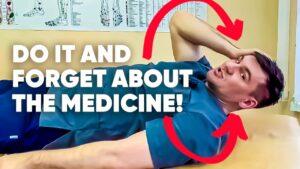In this video, ER nurse Nicole answers common questions about the emergency room. She shares that as an ER nurse in New York City, she sees a wide range of patients and conditions, including chest pain, shortness of breath, infections, COVID cases, and sports injuries. Nicole advises that you should go to the ER for symptoms like chest pain, shortness of breath, uncontrollable bleeding, persistent nausea and vomiting, signs of stroke, confusion, weakness, inability to walk straight, and severe sports injuries. She also discusses how to treat a severed limb, impaled objects, and a workout-induced condition called rhabdomyolysis.

Our Summaries are written by our own AI Infrastructure, to save you time on your Health Journey!
Key Insights:
- ER nurses see patients of all ages and with a wide range of medical conditions, from newborns to the elderly.
- Reasons to go to the ER include chest pain, shortness of breath, severe bleeding, persistent nausea and vomiting, signs of stroke, confusion, weakness, and serious sports injuries.
- If a limb is severed or there is a deep cut affecting blood supply, immediate emergency care is needed to control bleeding and restore circulation. This may involve going to the operating room.
- If an object is impaled in the body, it is crucial not to remove it on your own. Call 911 and go to the emergency room for safe removal.
- Rhabdomyolysis is a condition where intense exercise and insufficient hydration can cause muscle breakdown, releasing harmful proteins into the bloodstream. This can lead to kidney damage and electrolyte imbalances.
- Common symptoms of rhabdomyolysis include severe muscle soreness and dark-colored urine.
- Treatment for rhabdomyolysis may include IV fluids and close monitoring of electrolytes.
Transcript
Alright, alright, we’re talking everything you need to know when it comes to the emergency room. That’s right, this is our ER Nurse Nicole, and she’s answering all of your burning questions when it comes to what happens in the ER.
Okay, I’ve got All of Nicole’s raves. She is a registered nurse, boom! She works at Lenox Hill Hospital in New York City, bam! And on her days off, you can find her at the gym, come on now, or scuba diving in the keys. So, girl, I know you’ve seen some stuff go down in the ER. What types of things have you seen on the regular as a nurse in New York City?
So, the best thing about being an ER nurse is that I get to see everyone. We’re talking newborns to a hundred-year-olds, people. We’re talking pregnant people, kids, young adults, mid-adults, yes, anything you could think of. We’re looking at chest pain, shortness of breath, infection, COVID, sports injuries, literally everything, literally the A to Z’s of the ER.
Alright, internet, let’s see what’s on your mind. Our first question comes from someone on Twitter: when do I know that I really need to go to the ER?
There’s a lot of reasons that you should definitely go to the ER. The first things that come to my mind are chest pain, shortness of breath, any type of cut that won’t stop bleeding, nausea, vomiting for multiple days where you feel like you’re super dehydrated. Signs of stroke symptoms, where you feel like you can’t get your words out, you or someone else is confused, unilateral weakness, inability to walk straight, anytime you feel like you have a sports injury more than just a sprain, you should go to the ER.
Okay, here’s our next question from someone on Instagram. How do you treat a severed limb?
Well, anytime anyone comes in with any type of limb that might be severed or a really deep cut that is interfering with the blood supply, even if your arm is still intact but you have a deep cut that’s cutting an artery, we’re talking this is a big deal, you need to go to the OR. So, as far as the ER goes, we’re always going to start with the ABCs of emergency medicine. A is airway, which means we make sure the airway is patent, B is breathing, which means that we make sure the patient is able to breathe, get oxygen in and out, and C is circulation, which means blood is going where it needs to go. So, if you have an arterial bleed, you need to put pressure on that right away because you can lose too much blood or, if the blood is unable to get to the tissue, you’re talking tissue death. So, in this situation, you want to get the bleeding controlled as quickly as possible, and you want to get to the OR as quickly as possible, which is the operating room. So, that is where they’re going to repair everything. But, in terms of the ER, we’re just trying to stabilize and get to the OR as quickly as possible.
Alright, so next question. How do you treat an impaled object?
This question is very important for people at home if something like this happens because a lot of times, when it originally happens, their first instinct would be to pull the item out wherever it may be. Yeah, and you definitely don’t want to do that, and I repeat, do not pull out the impaled object on your own because you run the risk of A, bleeding out, or B, damaging something more in the process of pulling it out. So, you want to call 911, get to the emergency room as quickly as possible, and that’s where they will determine how to safely remove the object.
Alright, that brings us to our next question on TikTok. What’s a workout condition that you commonly see that a lot of people don’t know about?
So, there’s this common condition that a lot of young people will come into the ER with, and this is a condition called rhabdomyolysis, or just rhabdo. So basically, what’s happening is you push yourself way too hard and you probably didn’t drink enough water, and this causes your muscle to start breaking down into the bloodstream, releasing proteins that aren’t supposed to be there. And when that happens, you run the risk of damaging your kidneys and putting your electrolytes severely out of balance.
So, what type of symptoms typically occur with this rhabdo?
So, you’re going to have out-of-proportion muscle soreness. You’re looking at very dark, tea-colored urine, really?
All this overtraining causes these specific symptoms, right?
That’s so severe, right? And it’s very hard for your kidney to filter this protein throughout the blood, and it will make your electrolytes very out of balance.
Well, how can someone treat something like this?
So, you’re going to get a ton of IV fluids. You might have to stay a couple of days in the hospital, so we can give you lots of fluids and keep a close eye on your electrolytes.
Well, comment below with all your pressing health questions, and of course, hit subscribe here to the health channel to get more answers from medical experts on the questions you want to know. Nurse Nicole, thank you so much for joining us.
Thank you for having me. We appreciate you for everything that you do.





